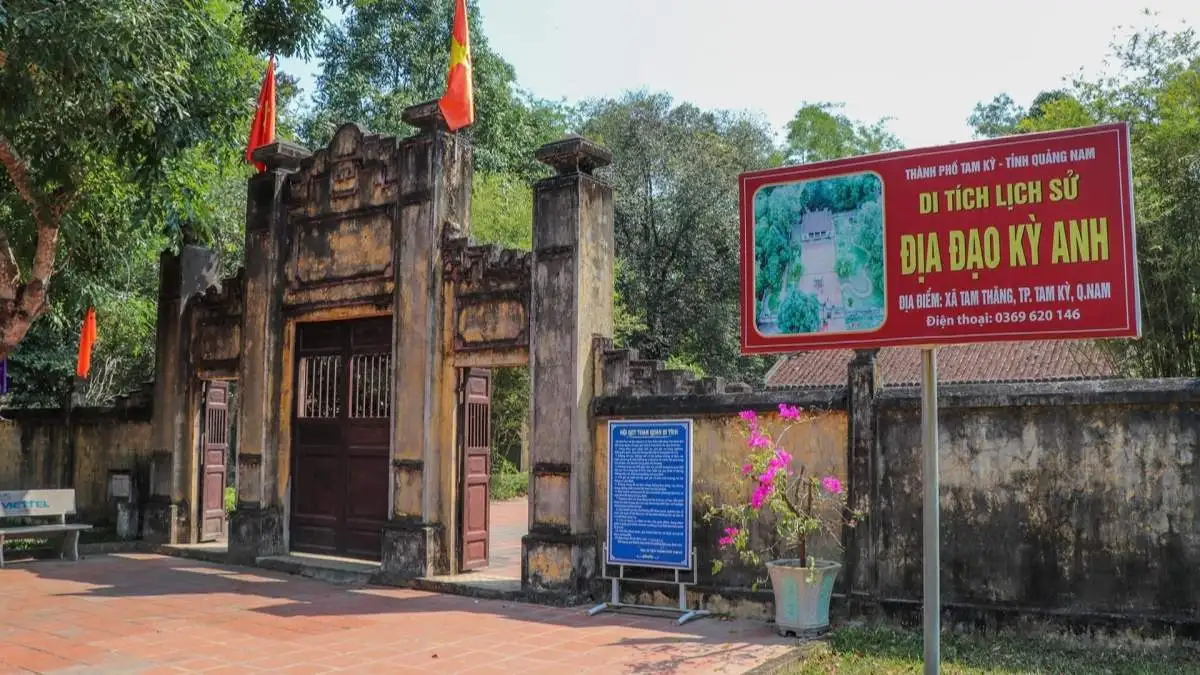Ky Anh Tunnels – Vietnam’s hidden underground fortress
Tucked away in the peaceful village of Thach Tan, beneath a 300-year-old communal house, lies one of Vietnam’s most remarkable wartime secrets: the Ky Anh Tunnels. Not like the more famous and commercialized Cu Chi Tunnels, the Ky Anh Tunnels system offers a more authentic, raw look into wartime resilience, waiting to be explored. The tunnel network brings a rare, immersive look at the toughness and ingenuity of the Vietnamese people during one of the nation’s most turbulent periods to those who are ready.
Overview of Ky Anh Tunnels
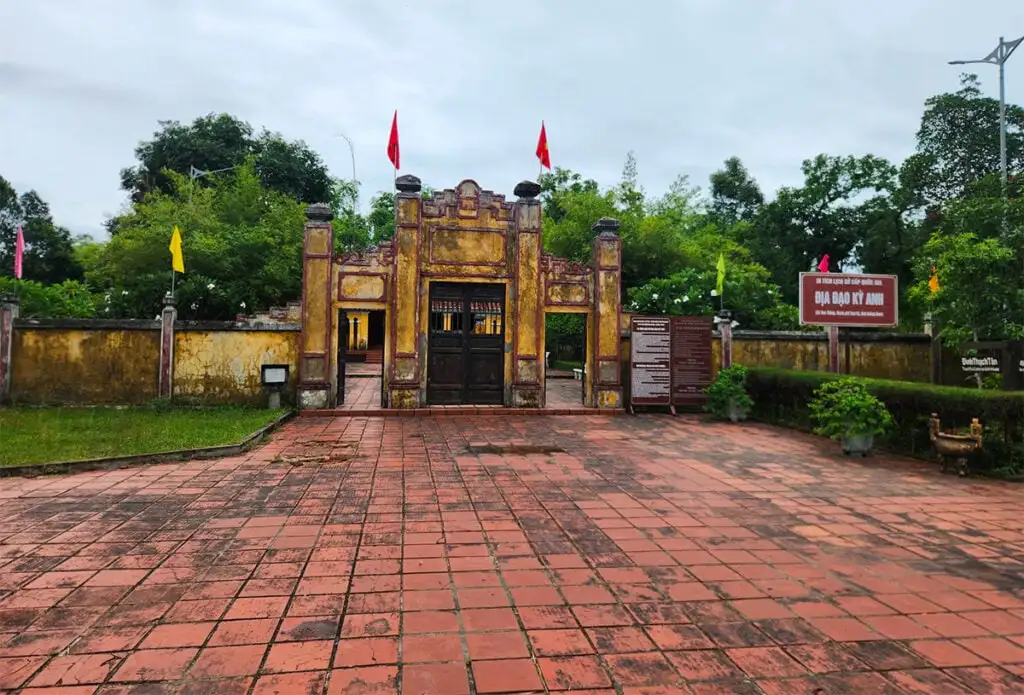
The Ky Anh Tunnels system was built in the Vietnam War, or, precisely speaking, the Resistance War against Americans of Vietnamese people. The network is famous for being the third largest tunnel in Vietnam, located in Tam Thang Commune, Quang Nam Province (now Da Nang), about 80 km south of the city center. Such a quiet and tranquil countryside, far removed from the busy tourist trails, offering a truly immersive historical experience.
The history of Ky Anh Tunnels
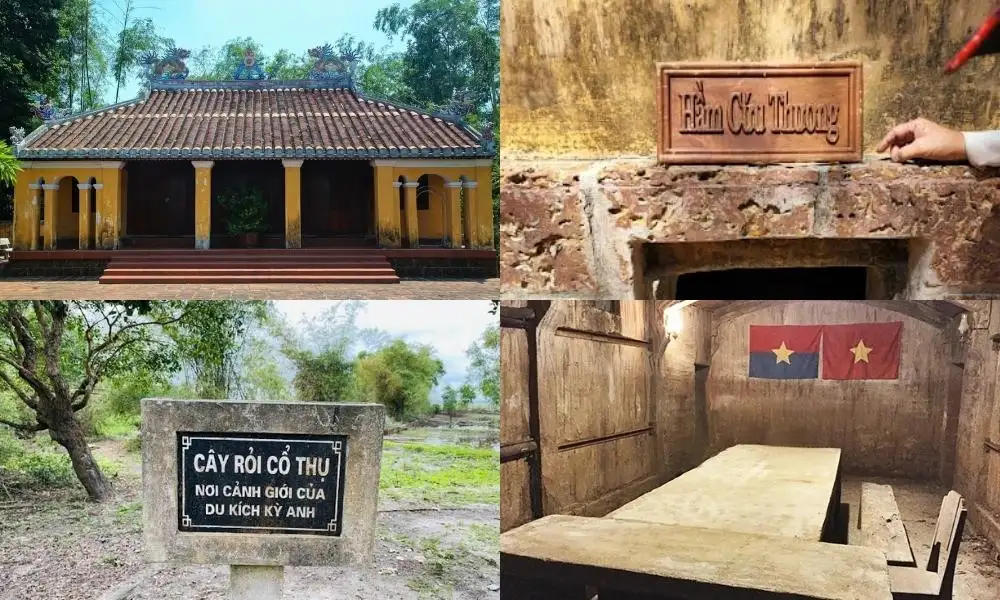
The construction of the Ky Anh Tunnels began in May 1965 and was completed by 1967. It stretches approximately 32 kilometers under the villages, about 1.6 m below ground level, with a width of 0.5-0.8 and a height of 0.8-1 meters. The tunnels were dug by local villagers, including soldiers, guerrillas, women, and farmers, using simple tools such as hoes, shovels, crowbars, and baskets.
During the resistance war against the US, the tunnels made an important contribution to the fighting strategy of the army and people of the old Da Nang (previously Quang Nam). It served as a strategic command center, medical clinic, storage for food and weapons, bomb shelter, secret combat position, and cleverly camouflaged ventilation shaft. However, over time, the Ky Anh Tunnels have deteriorated, but due to limited investment resources, it is difficult to invest in and restore them.

In 1994, Ky Anh commune (now called Tam Thang) was honored to be awarded the title “Hero of the People’s Armed Forces.” In 1997, the tunnel was officially recognized as a National Historical Relic, attracting many tourists to visit the Ky Anh tunnel, especially those who are fascinated by history. Today, only a portion of the tunnels in the Tam Thang Commune is open to the public.
Exploring Ky Anh Tunnels Guideline
When going to the Thach Tan communal house, you will see the ceramic stele, with its name in stylized writing in the center (Đình Thạch Tân). Going inside the hall, you will see 8 boards with the names all over the walls. There write the names of the villages’ soldiers and the heroic mothers who lost their families during the war. There is also a map of the village in the corner, written in Vietnamese only, so you can ask locals or tour guides to read it for you.
From the communal house area, follow the marked pathway toward the tunnel entrance. The walk is usually easy and passes through scenic rural surroundings, giving you a sense of the local landscape. After checking out the on-ground structure, now you can take your time in the Ky Anh Tunnels. The entrance to the tunnels is typically narrow, requiring you to bend or crouch as you enter carefully. Take your time and watch your step to ensure safety.

Inside the tunnels, you will explore various chambers such as living quarters, command rooms, storage areas, and hidden ventilation shafts. The guides will share stories and historical context, helping you understand the hardships and bravery of those who built and used the tunnels during the Vietnam War. Remember to follow safety instructions, avoid touching the walls, and keep noise to a minimum to preserve the atmosphere.
After exiting the tunnels, you can spend some time reflecting on the experience, visiting souvenir shops, or exploring additional exhibits nearby. The visit to Ky Anh Tunnels offers a powerful insight into Vietnam’s history and the resilience of its people, making it a meaningful destination for travelers interested in culture and history.
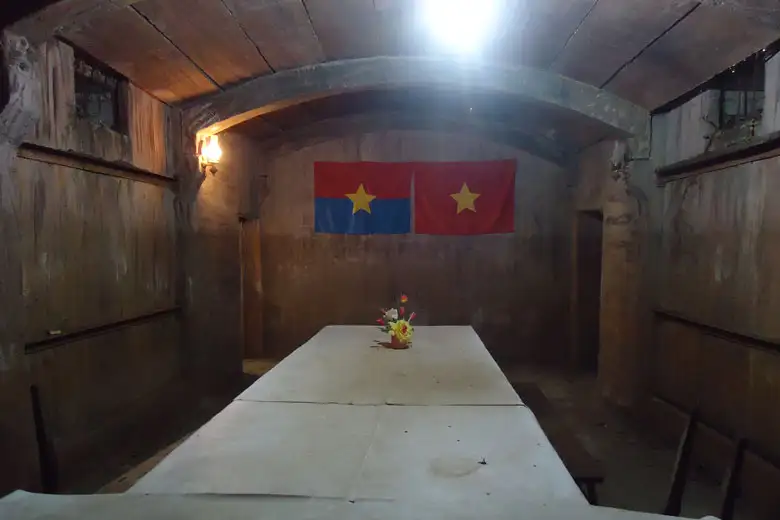
Comparison of Cu Chi, Ky Anh, and Vinh Moc Tunnels
The Ky Anh Tunnels network is the third largest tunnel in Vietnam, after the Cu Chi and Vinh Moc Tunnels. The Cu Chi system is the most popular and has been commercialized to afford so many visitors coming to Ho Chi Minh City to investigate. The Vinh Moc Tunnels are in Quang Tri, the province that suffered the most damage during the war. The approximate length of the Cu Chi Tunnel is 250 km, 6 times larger than the Vinh Moc Tunnels system with around 42 km.
Regarding the utilization, the Cu Chi Tunnels are famous for their guerrilla warfare with the abilities to hide, move troops, supply, store, trap, and ambush. On the other hand, the Vinh Moc system is primarily for civilian survival, since it provided a safe place for a community to live for a long period, with water wells, underground birthing rooms, the Hoang Cam kitchens, etc. The Ky Anh Tunnels are a mix of two: a place both for civilian shelter/base and military uses.

In terms of infrastructure, the Cu Chi Tunnels are generally tighter, with lower ceilings and narrow passages, especially in more “authentic” parts. Many parts of the Ky Anh Tunnels are similarly tight, so you often need to crouch or crawl. Contrarily, the corridors in the Vinh Moc Tunnels have higher ceilings in many sections, with multiple levels giving more room; each room can be large enough for a family of 4.
Cu Chi is iconic internationally: massive in scale, very well known, with many facilities for tourists. Vinh Moc stands out for its deep levels, its civilian focus, and the experience of walking through tunnels where families lived and children were born, giving a sense of the cost of war on noncombatants in a poignant way. While Ky Anh gives off an intimate feeling of “people’s base.” The fact that the tunnels run through residential areas, through wells, houses, and the communal house, makes them seem mysterious.
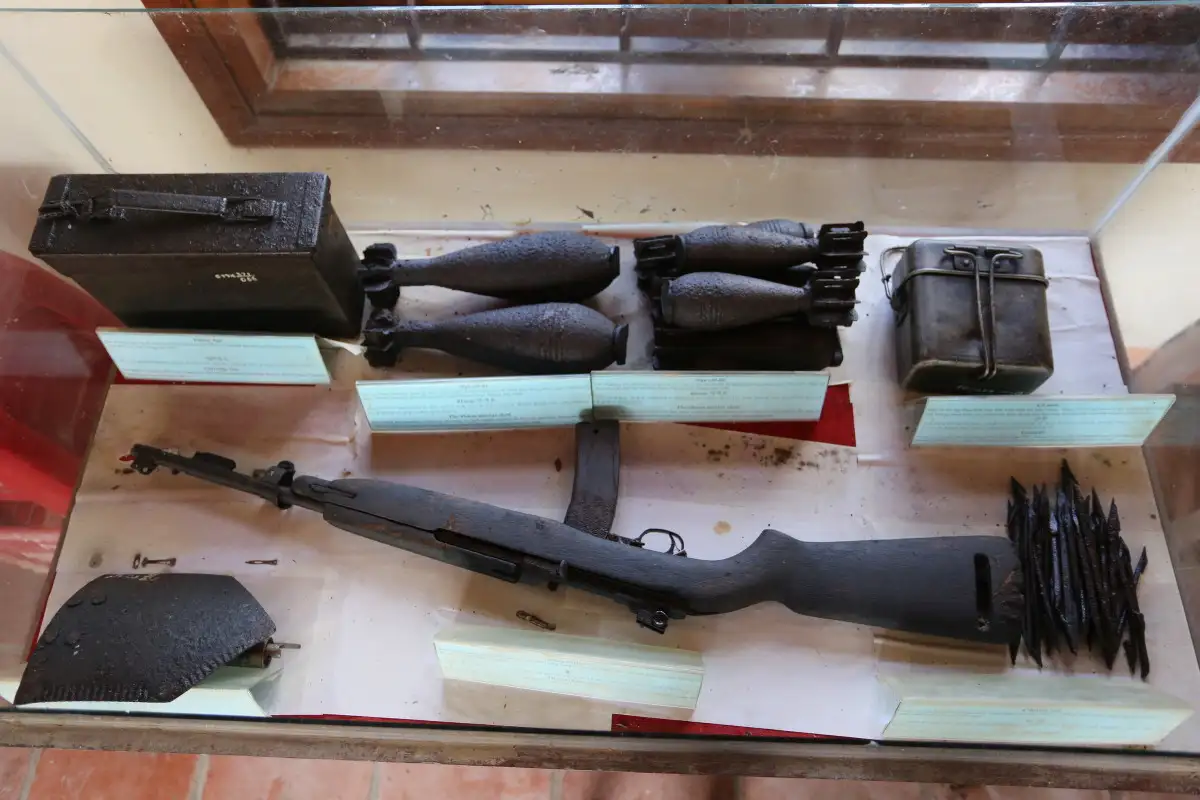
Travel tips for Ky Anh Tunnels’ visitors
If you’re planning to explore the Ky Anh Tunnels, here are a few helpful tips to make the most of your visit:
- Best Time to Visit: From February to August, during the dry season, when roads are more accessible and the tunnels are less humid.
- What to Bring: Wear comfortable shoes, bring a flashlight, bottled water, and dress in light clothing. The tunnels can be hot and narrow.
- Health Advice: Visitors with claustrophobia or mobility issues should avoid entering deeper parts of the tunnel.
- Entrance Fee: The site is managed locally and often has no formal entrance fee, but donations or guide tips are appreciated.
- Duration: Allocate around 1-2 hours for the full experience, including the tunnel system and the surrounding village area.
Route to Ky Anh Tunnels
The tunnel complex is located in Tam Ky, making it easily accessible from Da Nang or Hoi An:
- From Da Nang: Approximately 80 km, about 1.5 to 2 hours by car or motorbike.
- From Hoi An: Around 50 km, roughly 1 to 1.5 hours travel time.
You can hire a private car, join a guided tour, or rent a motorbike for a scenic ride along the coastal highway.
Ky Anh Tunnels and Mother Thu Momentum tour
Perhaps, you would love to consider the Ky Anh Tunnels and Mother Thu Monument tour that is provided by Bliss Hoi An Beach Resort & Wellness. With only 1,280,000 VND per person (around $50 with the exchange rate of $1 to about 26,000 VND), you will have an enthusiastic 3-4 hour trip to explore Vietnamese history. We take care of tour guides, transportation, mineral water, and entry fees, so you just have to stay energetic and enjoy the visiting!
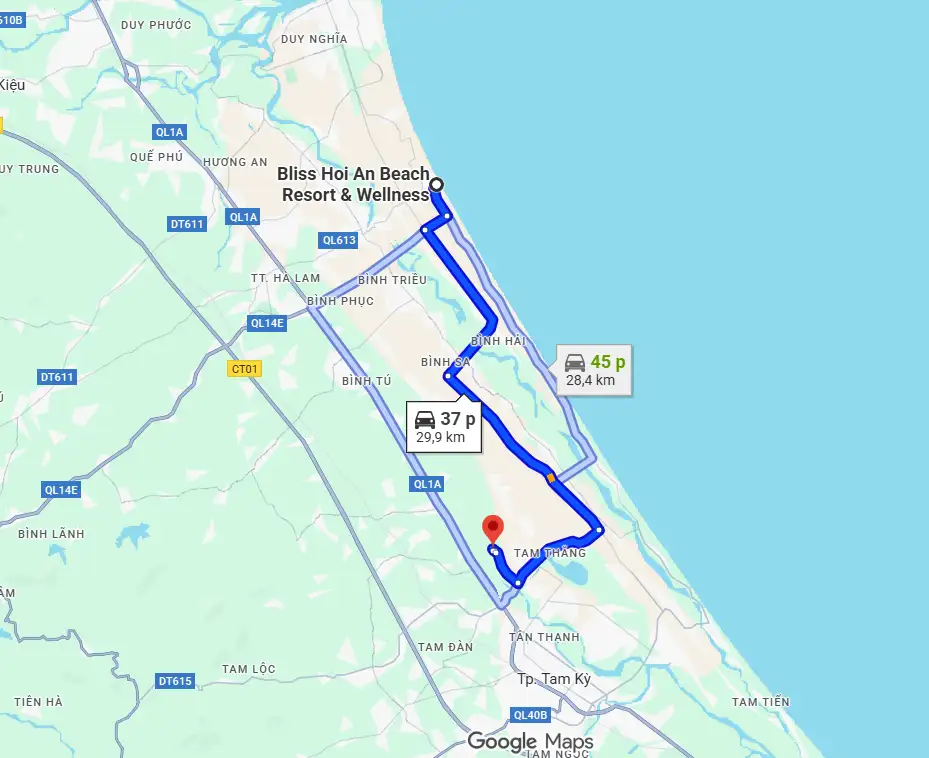
Besides visiting Ky Anh, the tour allows you to sightsee another significant cultural and historical site: the Mother Thu Monument. It was one of the largest monuments of its kind in Southeast Asia, built to honor the heroic Vietnamese mothers who sacrificed during the two wars for national independence. Our guided tour will introduce to you her touching story, and you can go around, take photos, and take in the broad, large space, plus fresh air and atmosphere.
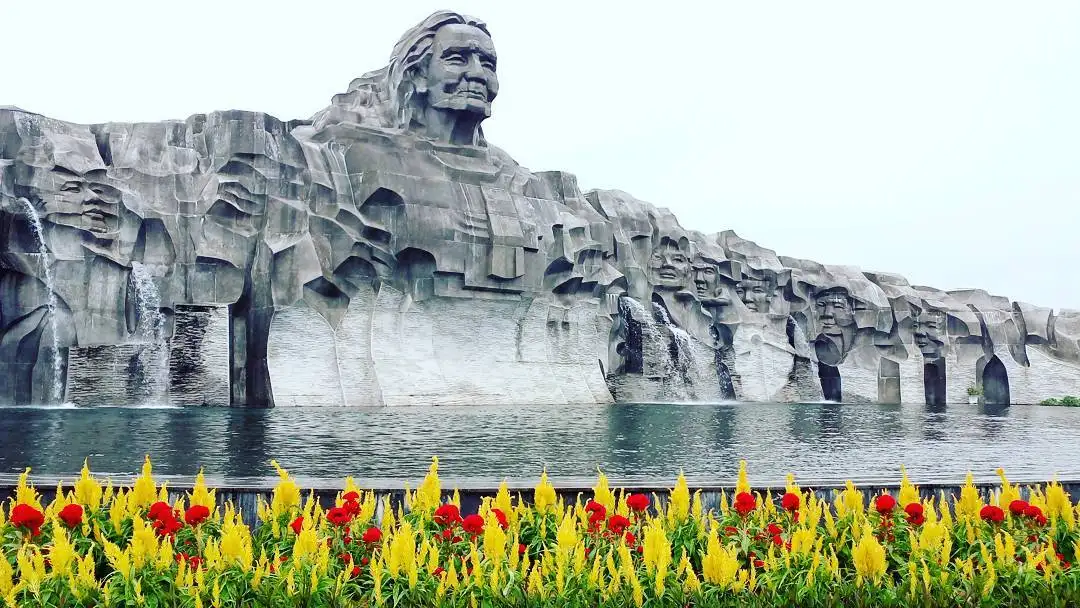
Where to Stay in Your Exploring Journey in Da Nang
Most tourists prefer Da Nang for its wide range of accommodations, amenities, and appealing places to visit, so maybe you would like to consider Bliss Hoi An Beach Resort & Wellness. With luxury rooms, beautiful beachside views, and amenities like a Vietnamese-flavored restaurant and beach bar, the hotel is a pleasant resting place to unwind.
We also offer numerous tours to Hoi An, Hue, My Son Sanctuary, etc., that cover the tour guide, car, water, and entry fees (if any). So if you are ready for a nice, relaxing but also adventurous journey to Da Nang, contact us at +84 912 060 558 for booking!

